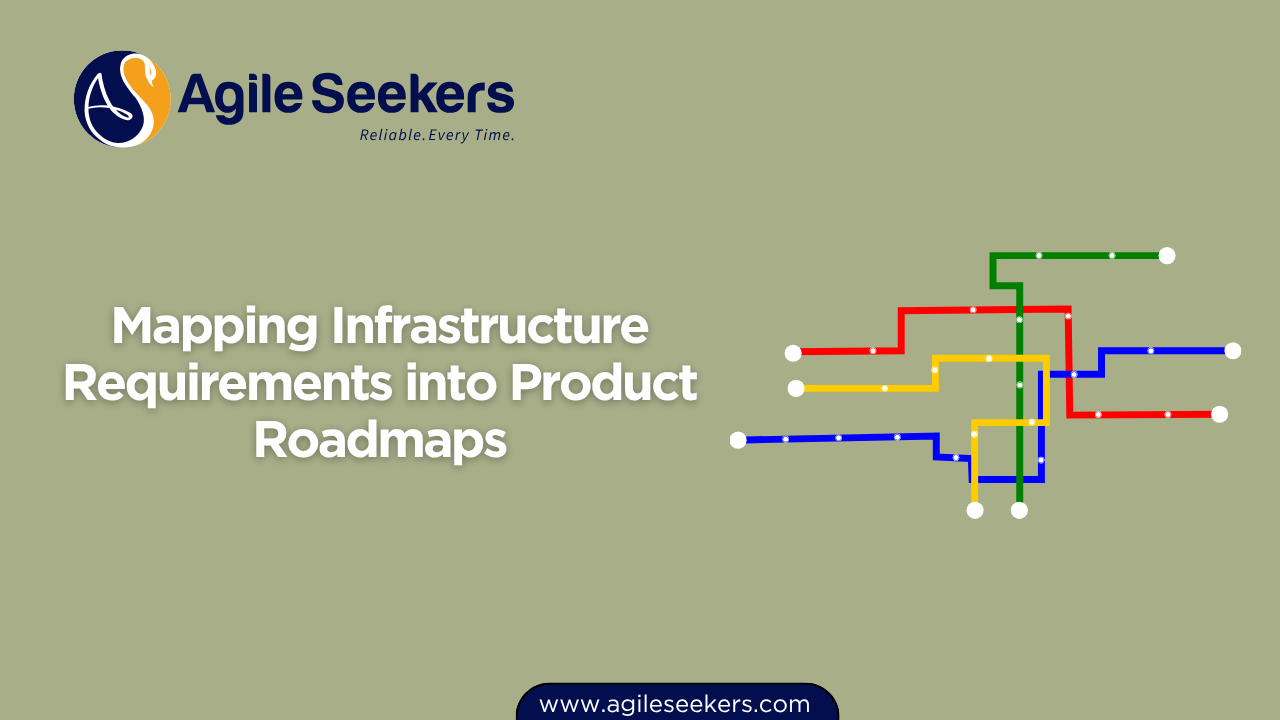Mapping Infrastructure Requirements into Product Roadmaps

When teams plan product roadmaps, the focus often lands squarely on user-facing features—UX updates, new functionality, or integrations. However, neglecting infrastructure requirements can jeopardize long-term scalability, performance, and system reliability. Infrastructure isn’t just a backend concern; it’s a strategic enabler of product capabilities. Integrating these requirements into the product roadmap ensures smoother releases and a more resilient product architecture.
Why Infrastructure Deserves a Spot on the Roadmap
Infrastructure elements—CI/CD pipelines, load balancers, observability tools, cloud architecture—may not be visible to customers, but they impact every product decision. Ignoring these during planning leads to surprises later: delayed releases, broken deployments, or worse, production failures. Product Owners and Project Managers need to treat infrastructure with the same priority as features.
This is where product owners with technical insight, such as those trained through SAFe POPM Certification, add strong value. They bridge business outcomes with the technical necessities that make those outcomes possible.
Common Infrastructure Requirements to Consider
- Cloud environment setup (e.g., AWS, Azure configurations)
- Monitoring and observability systems (like Prometheus, Datadog)
- CI/CD pipeline optimization
- Security protocols and penetration testing automation
- Data migration support and database replication setups
- Backup and disaster recovery planning
These are not standalone technical tasks—they support the delivery of business features. Mapping them into the roadmap avoids last-minute blockers and escalations during deployment cycles.
Step-by-Step Approach to Integrate Infrastructure into Product Roadmaps
1. Collaborate Early with DevOps and Architects
Before quarterly planning or PI Planning, include infrastructure stakeholders in the backlog refinement process. Their insights can highlight dependencies that otherwise remain hidden until late in the sprint cycle.
For instance, a feature requiring real-time processing might also require upgrading Kafka clusters or deploying a load balancer. These tasks should not be hidden in technical debt—they deserve visibility on the roadmap.
2. Categorize Infrastructure as Enabler Work
Using frameworks like SAFe helps classify infrastructure work as Enabler Features. These support business capabilities and appear on the program board just like features. With structured approaches like SAFe Product Owner/Manager Certification, teams learn how to treat enabler work seriously and allocate capacity accordingly.
Product Managers should negotiate bandwidth during planning to ensure enough runway for these initiatives, especially when shared across multiple teams.
3. Use OKRs or Business Goals to Justify Infrastructure Investment
When requesting roadmap inclusion for tasks like setting up distributed logging or implementing Infrastructure as Code (IaC), tie them back to OKRs. For example:
- Objective: Improve deployment reliability
- Key Result: Reduce deployment rollback rates by 25%
This gives stakeholders a measurable outcome and prevents infrastructure initiatives from being deprioritized in favor of visible features. As shown in Martin Fowler’s take on Infrastructure as Code, embedding infrastructure into product thinking enhances agility and reduces risks.
4. Visualize Dependencies Clearly
Use dependency maps, Gantt views, or roadmap tools (like Aha!, ProductBoard, or Jira Advanced Roadmaps) to show how infrastructure upgrades align with product milestones. This makes it easier to see what must happen before feature delivery can proceed.
For example, a new AI module depending on GPU scaling must be preceded by cloud provisioning tasks. These can’t be “invisible” stories; they need slots on the roadmap.
5. Budget and Resource for Infrastructure from the Start
Project managers often face budget constraints that force tough trade-offs. With proper planning and stakeholder buy-in, infrastructure investments can be treated as foundational, not optional. Following principles taught in PMP certification training, a structured approach to scope, budget, and stakeholder management helps justify infrastructure line items early in the project lifecycle.
Balancing Feature Velocity and Technical Stability
Product Owners may feel pressured to deliver visible features quickly. However, without infrastructure readiness, technical debt balloons, and delivery slows down over time. A disciplined approach balances velocity and quality.
Consider setting a fixed capacity allocation per sprint or release cycle—say, 20–30% for enabler work. This creates predictable progress on infrastructure without constantly renegotiating its value.
Tooling Support for Roadmap Integration
Modern product tools support tagging and visibility for infrastructure tasks. Examples include:
- Jira: Use Epics labeled “Infra” or “Enabler,” and link stories to product features
- Aha! Roadmaps: Visualize both technical and business tracks
- Productboard: Tie infrastructure items to user outcomes via insights or tags
Whether you're managing a high-scale SaaS platform or a regulated enterprise application, infrastructure and product planning go hand in hand. Teams that master this balance reduce firefighting and improve delivery consistency.
Use Case: Aligning Product and Infrastructure for a New Platform Launch
Imagine your team is launching a platform with microservices, user-facing dashboards, and a mobile app. Here’s how infrastructure lines up:
| Product Initiative | Related Infrastructure Task |
|---|---|
| Dashboard with real-time metrics | Deploy time-series DB and setup Grafana dashboards |
| Mobile authentication | Set up OAuth2 flow and secure gateway routing |
| Data sync with legacy systems | Create data pipeline + ETL scheduler |
| High availability guarantee | Provision auto-scaling groups in AWS |
Mapping infrastructure explicitly avoids delays during later sprints when these are treated as urgent tickets or hotfixes.
Final Thoughts
Product leaders who include infrastructure on their roadmaps build more resilient, scalable, and secure systems. This practice ensures teams aren’t only shipping fast, but also shipping smart. Whether you’re learning through Project Management Professional certification or the SAFe Popm training, the message is clear: infrastructure isn’t overhead—it’s the bedrock of sustainable product delivery.
For deeper insights on this, check out this ThoughtWorks article on why infrastructure belongs in product planning.
Also read - Working with Engineers to Define System Boundaries and Interfaces
Also see - Translating Non-Functional Requirements into Backlog Items




















